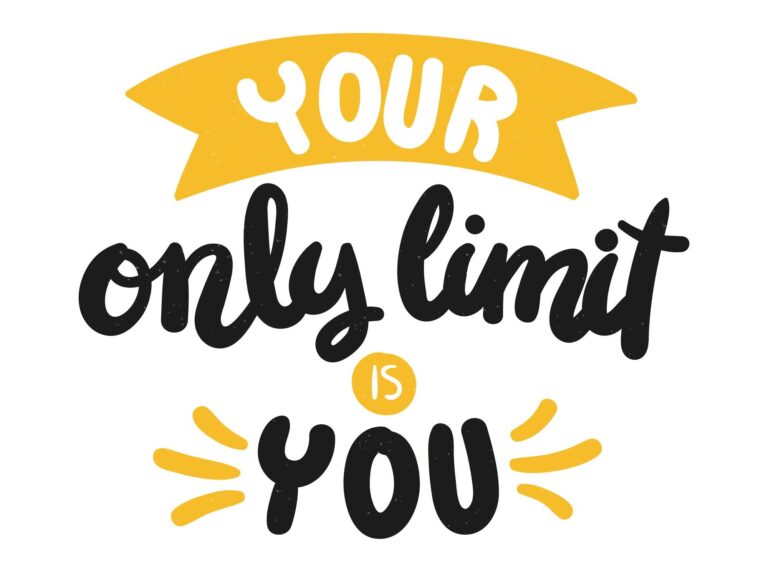The art of letting go: 8 techniques for releasing what no longer serves you
You know you need to let go, but every time you try, you end up right back where you started.
Maybe it’s that relationship that ended months ago but you keep replaying what went wrong. Maybe it’s the job rejection that has you questioning everything. Or maybe it’s just that voice in your head saying you’re not good enough.
We all carry things that aren’t helping us anymore. But letting go feels impossible sometimes.
Letting go isn’t about erasing the past; it’s about making space for new growth, peace, and self-discovery. Letting go isn’t about pretending the past didn’t happen or forcing yourself to “get over it” on someone else’s timeline. It’s about making space for who you’re becoming instead of staying stuck in who you used to be.
Why letting go matters
The stuff you’re holding onto is exhausting you.
That mental replay of what went wrong. That constant what-if spiral. That tight feeling in your chest when you think about that situation. All of that takes energy – energy you could be using to build something better.
But letting go feels impossible because our brains are wired to hold on. That thing you can’t release? At some point, it served a purpose. Maybe it kept you safe. Maybe it made you feel in control. Maybe it was your way of protecting yourself.
Your brain doesn’t care if it’s helpful anymore. It just knows it’s familiar. And familiar feels safer than unknown, even when familiar is making you miserable.

Step 1: Get honest about what you’re carrying
Before you can let go of anything, you need to name what you’re actually holding onto. And I mean really name it – not the pretty, socially acceptable version.
Ask yourself:
- What story do I keep telling myself about what happened?
- What person am I still having imaginary arguments with?
- What mistake am I still punishing myself for?
- What dream am I afraid to admit is over?
- What version of myself am I refusing to let die?
Don’t sugarcoat this. If you’re angry, say you’re angry. If you’re heartbroken, say you’re heartbroken. If you’re scared, say you’re scared. If that inner critic is loud and relentless, these positive self-talk techniques can help you rewrite those automatic negative thoughts.
Get real exercise:
Grab your phone and open a new note. Set a timer for 5 minutes and just dump everything you’re carrying. All the hurt, all the anger, all the fear. Don’t edit yourself – just get it out. Sometimes seeing it all written down shows you just how much you’ve been carrying.
Step 2: Figure out why you won’t put it down
Now that you know what you’re carrying, let’s figure out why you’re still carrying it.
Most of the time, we hold onto stuff because letting go feels scary. What if forgetting means it didn’t matter? What if moving on means you’re weak? What if letting go means it could happen again?
Ask yourself:
- What do I think will happen if I let this go?
- What does holding onto this give me? (Control? Identity? Protection?)
- What am I afraid I’ll lose if I release this?
- Do I think I deserve to feel better?
Sometimes we hold onto pain because it feels like the only proof that something mattered. Sometimes we hold onto anger because it feels stronger than sadness. Sometimes we hold onto old versions of ourselves because we don’t know who we’d be without them.
Reality check: Holding onto what hurts you doesn’t honor it. It just keeps it alive in the worst possible way.

Step 3: Stop beating yourself up about it
You’re probably being too hard on yourself about not “getting over” whatever this is fast enough.
You might be thinking: “It’s been months, I should be over this by now” or “Other people don’t struggle with this like I do” or “I’m so weak for still caring.”
Stop that.
Letting go isn’t a race. There’s no timeline that says you should be “over” something by a certain date. And beating yourself up for still struggling just adds more weight to what you’re already carrying.
The fact that you’re still affected by something doesn’t make you weak. It makes you human. Learning to treat yourself with kindness during this process is crucial. These self-compassion exercises will help you navigate the emotional ups and downs of letting go with more grace.
Self-compassion check:
The next time you catch yourself being harsh about your healing process, pause. Put your hand on your heart and say: “This mattered to me, and it makes sense that it still affects me. I’m allowed to take the time I need.”
Step 4: Focus on the present moment
One reason we hold onto the past is that it keeps us stuck in what was, rather than what is. Practicing mindfulness and focusing on the present moment can help shift your attention from the past to the life you’re living right now. When you focus on the present, it becomes easier to see what no longer belongs in this chapter of your life.
Mindfulness doesn’t have to be complicated. It can be as simple as taking a few minutes each day to breathe deeply, notice your surroundings, or fully engage in something you enjoy. By grounding yourself in the present, you’re less likely to get lost in past memories or future worries.
Mindfulness exercise:
Each morning, take five minutes to sit quietly. Get comfortable, take deep breaths, and focus on each inhale and exhale. Imagine letting go of any lingering thoughts or worries with each breath out. This simple practice will help you start the day with a clear mind and will calm you down.

Step 5: Practice gratitude for what you’re releasing
Gratitude isn’t just about being thankful for the good things; it’s also about appreciating the role of past experiences and relationships, even the tough ones. Recognize that what you’re letting go of might have served you in some way, even if it no longer does.
By honoring these experiences, you can let them go with gratitude instead of resentment or regret. Appreciate the experiences you gained and lessons you got. This shift will allow you to release them peacefully, without holding onto anger or bitterness.
Gratitude reflection:
Write a thank-you note to the things you’re letting go of. It could be a past relationship, a limiting belief, or even a habit. Acknowledge what it taught you, how it served you, and why you’re now ready to move forward.
Step 6: Create new habits and mindsets
Letting go means making space for something new. When you release an old pattern or belief, it’s very helpful to replace it with habits or mindsets that support your growth. For example, if you’re letting go of self-doubt, you might try practicing self-affirmations or spending more time with people who uplift and build you up.
Creating new habits helps you move forward with purpose. Need specific ideas for building self-loving habits? These 5 simple daily practices will help you replace old patterns with ones that actually serve you.It helps you see that you’re not just letting go, but you’re actively building a life that feels fulfilling and true to you.
Habit-building exercise:
Choose one positive habit or mindset shift you’d like to adopt. It could be as simple as practicing gratitude each morning or setting aside time each week to check in with yourself. Start small and be consistent. As you build new habits, you’ll feel better and safer in the life you’re creating, rather than the one you’re leaving behind.

Step 7: Let go of expectations
One of the hardest parts of letting go is releasing our expectations of how things “should” be. Expectations often come from a desire for control, but as we all know, we can’t control everything. Even if it would be nice sometimes. By letting go of expectations, you open yourself up to new possibilities and often those new experiences are even better than what you’d planned.
Reflection exercise:
Think of an area in your life where you feel disappointed or frustrated. Ask yourself, “Am I holding onto specific expectations that might be holding me back?” Try letting go of those expectations and allowing things to unfold naturally.
Step 8: Seek support
Letting go can be hard, and it’s perfectly okay to ask for support. Whether it’s a friend, therapist, or support group, having someone to talk to can make a huge difference. Sharing your journey with others reminds you that you’re not alone and gives you a safe space to process your thoughts and feelings.
Support exercise:
Think of one person you trust and share your intention to let go of something that’s been weighing you down. Saying it out loud makes it feel real and gives you someone to lean on as you work through the process.

The beauty of letting go is that it creates space for freedom and growth. You’re not just releasing what no longer serves you, you’re stepping into a new chapter with a renewed sense of self. Each step brings you closer to a life that feels lighter, more authentic, and aligned with who you really are.
Letting go is an ongoing journey. It takes patience, self-compassion, and the courage to trust that what lies ahead is worth the release. Don’t get discouraged by ups and downs, that’s the beauty of the journey you’re on.
Remember, the ups and downs are part of the process; each step forward, no matter how small, brings you closer to a lighter, more fulfilling life.
Your next step – from insight to transformation
Reading about letting go is one thing – actually doing it is another. Personal growth workbooks provide the structure and accountability that turn insights into lasting change.
The Letting go (30 day workbook) is specifically designed to guide you through this process with:
- Daily structured exercises that build on each step we’ve explored,
- Journaling prompts to help you identify and release what no longer serves you,
- Practical techniques for creating new, empowering habits,
- A supportive framework to help you navigate the emotional aspects of letting go.
But letting go is just one part of a complete self-love practice. That’s why the complete Self-love bundle includes companion workbooks that support you through every aspect of this journey:
- Letting go workbook – daily exercises to release what’s holding you back
- Self-compassion workbook – transform self-criticism into kindness during vulnerable moments
- Self-love rituals workbook – new daily practices to replace old patterns
- Self-love foundations workbook – build unshakeable self-worth from the inside out
Begin your journey to freedom and discover how much lighter life feels when you release what’s been weighing you down.







